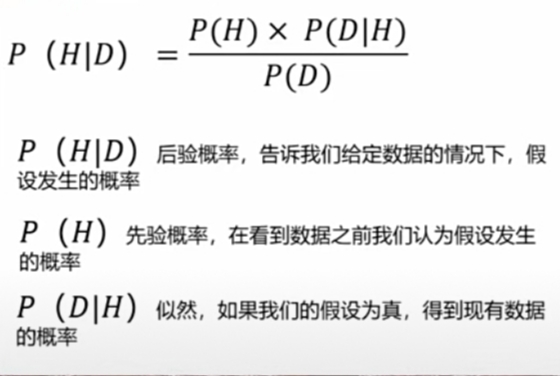SciTech-Mathematics-Probability+Statistics-Statistical Proofs-[THREE types of Probability]{Subjective:Choices/Decisions/Conclusions, Theoretical, Empirical}
Links
- Bayes, Empirical Bayes and Moderated Methods
- Empirical and theoretical prior distribution | The Book of …
https://www.khanacademy.org/math/cc-seventh-grade-math/cc-7th-probability-statistics/cc-7th-theoretical-and-experimental-probability/v/comparing-theoretical-to-experimental-probabilites
THREE types of Probability:
1 Empirical(Experimental) Probability:
The Probability that some specific Outcome of a process that will be obtained,
can be Interpretated to mean the Relative Frequency with which that Outcome would be obtained,
if the process were repeated a large number of times under similar conditions.
2 Theoretical(Classical) Probability:
based on the concept of ELO(Equally Likely Outcomes)
3 Subjective Probability:
- is personal judgement of Relative Likelihood that the outcome will be obtained,
- this judgement will be based on each person's beliefs and information about the process.
- This Subjective Interpretation of Probability can be formalized.
if people's judgments of the relative likelihoods of various combinations of outcomes,
"satisfy certain conditions of consistency", "then it can be shown that",
their Subjective Probabilities of the different possible events can be uniquely determined. - The subjective nature of science is also revealed:
- in the actual problem that a particular scientist chooses to study,
from the class of problems that "might have been chosen", - in the experiments that are selected in carrying out this study,
- in the conclusions drawn from the experimental data.
- in the actual problem that a particular scientist chooses to study,
- The mathematical theory of probability and statistics can play an important part,
in these choices, decisions and conclusions.
4 Difference between theoretical equations and empirical equations:
If we look at an equation can we identify whether it is a theoretical equation or an empirical equation just by looking at the equation?
- Theoretical equations are in the sense that they are derived from an underlying theory.
- Empirical equations are in the sense that they were selected only because they fit experimental data and without a theoretical justification.
5 Empirical and theoretical "Prior Distribution",
Index: ▷ General Theorems ▷ Bayesian statistics ▷ Prior distributions ▷ Empirical vs. non-empirical
Definition: Empirical and theoretical prior distribution
Definition: Let \(p(\theta | m)\) be a \(prior\ distribution\) for the parameter \(\theta\) of a \(generative\ model\) m. Then:
- the distribution is called an empirical prior, if it has been derived from empirical data;
- the distribution is called a theoretical prior, if it was specified without regard to empirical data.
Prior VS Posterior Probability
- Prior Probability: Definition + Example
- Posterior Probability: Definition + Example
Outcome vs. Event
BY ZACH BOBBITTPOSTED ON MAY 5, 2021
Two terms that students often confuse in statistics are outcome and event.
Here's the subtle difference between the two terms:
- Outcome: The result of a random experiment.
For example, there are six potential outcomes when rolling a die: 1, 2, 3, 4, 5, or 6. - Event: A set of outcomes that has a probability assigned to it.
For example, one possible "event" could be rolling an even number. The probability that this event occurs is 1/2.
The following examples show more scenarios that illustrate the difference between outcomes and events.
Example 1: Deck of Cards
Suppose we randomly draw a card from a standard deck of 52 cards.
The four possible outcomes for the suit of the card include:
- Heart
- Spade
- Diamond
- Club
One of these four "outcomes" must occur.
However, there are many "different" events that we may be interested in assigning a probability to.
For example:
- Event 1: Draw a Heart: The probability that this event occurs is 13/52 or 1/4.
- Event 2: Draw a Heart or a Spade: The probability that this event occurs is 26/52 or 1/2.
- Event 3: Draw a card that is not a Heart: The probability that this event occurs is 39/52 or 3/4.
There are many more events that we could come up with and assign a probability to, but these are just three simple ones.
Example 2: Pulling Marbles from a Bag
Suppose a bag has 3 red marbles, 5 green marbles, and 2 blue marbles.
If we close our eyes and randomly select one marble from the bag, the three possible outcomes for the color of the marble include:
- Red
- Green
- Blue
One of these four outcomes must occur.
However, there are many different events that we may be interested in assigning a probability to.
For example:
- Event 1: Draw a Blue Marble: The probability that this event occurs is 2/10 or 1/5.
- Event 2: Draw a Blue or Green Marble: The probability that this event occurs is 7/10.
- Event 3: Draw a Marble that is not Blue: The probability that this event occurs is 8/10 or 4/5.
These are three events that we can easily calculate probabilities for.
主观经验 和 客观事实:后验概率
Subjective主观经验: 先验概率 & 似然概率
Objective客观事实: 后验概率 & 条件概率




 浙公网安备 33010602011771号
浙公网安备 33010602011771号